LA is a modern-day Pompeii and in 50 years could be the world’s first ghost megalopolis
Since the fires, a gradual hollowing out, and even abandonment, of Los Angeles has already begun. With the threat of earthquakes, fires and volcanic eruptions, Jonathan Margolis talks to the experts who have long predicted the lasting chaos that could contribute to the decline of the American superpower
Sometimes I think there is something hardwired into Homo sapiens that causes us to disregard impending doom. Even having bought a property we only semi-jokingly call Glugglug House because it is on the River Thames, and even though we know there is a flooding risk, we’ve still spent enormous amounts over the past two years making it our forever home. Which is why I shouldn’t really have been shocked to hear that not one, but two climate scientists lost their own homes in the Los Angeles fires.
“Why on earth were they living there?” I wondered, before realising how very ironic my reaction was.
The LA fires, which are still burning, have now scorched and flattened a populated area more than 12 times the size of that destroyed by the Hiroshima atom bomb in 1945. For context, the area now devastated is the size of Paris or Washington DC.
Yet forest fire is not even the deadliest real and present danger in southern California. Earthquakes and tsunamis are constant threats, and there’s even the Yellowstone caldera to think about, an underground supervolcano that could take out most of California – as well as much of life on Earth, with the resulting volcanic winter.
I have worked in LA, have good friends there, and have come to love its relaxed, low-rise Mediterranean vibe, its idyllic villagey neighbourhoods. But in recent times, I have not always slept well there. For someone with a Woody Allen-like ability to worry, there’s just come to be just too much apocalyptic potential for one place.
So, all things considered, looking at a 50- or 100-year time horizon, is LA even viable as a place for human habitation? I think the city and its intelligent and creative people will have the foresight to build back better; its largely wooden-built houses are barely more robust than film sets. Yet I wonder if that mainspring of capitalism, the boring-but-important home insurance industry, will intervene to the effect that Los Angeles will one day become the world’s first ghost megalopolis.
Across large parts of the fire-ravaged west side of LA, people are already paying as much for insurance as they do for their mortgage, or more – a $40,000 to $50,000 (£32,000 to £40,000) annual premium is not unusual. And that was before this year’s fires. It is entirely possible that, in future, no insurance company will cover parts of LA at all.
As people move to the safer of the separate and distinctive towns that comprise Los Angeles, these areas may boom initially, but the loss of many of the city’s most sumptuous neighbourhoods could start a longer process of decline.
Then there’s the question of infrastructure. There are parts of LA where even a modest, boho house looks like a dream home to a British eye – but it has nevertheless struck me that the ubiquitous overhead power lines appear a bit, well, primitive. Can that be safe? It turns out not; that lashed-up look may have been responsible for starting some of the fires. LA needs to bury its power lines, but this alone would be a massively expensive undertaking.
And as fewer people can afford to live there – or aren’t able to buy there if there is no possibility of getting home insurance – there are also important questions to ask about the effect a gradual hollowing out, and even abandonment, of Los Angeles over the coming years could have on the American economy.
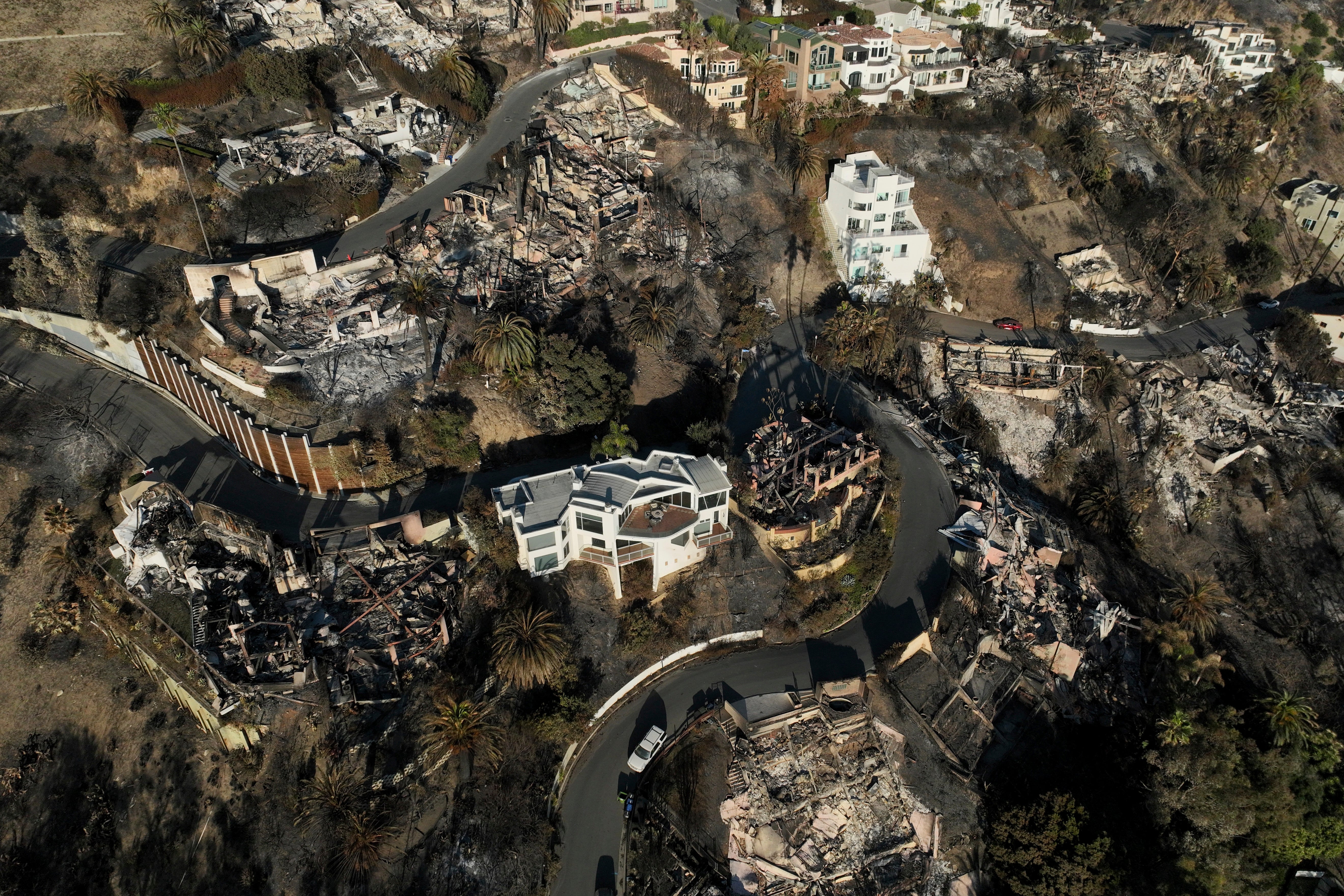
California’s economy currently accounts for 15 per cent of the total GDP of all 50 states. If California’s homeowners and businesses lost trillions in equity, the ripple effects –from property values to consumer spending to logistics to stock prices – could drag the rest of the US down. And as we know from the Great Depression of 1929 and the 2008 financial crisis, when America sneezes, the rest of the world catches a cold.
Could Los Angeles, City of Stars, Angels, La La Land, even become the Pompeii of the future – a vast metropolis destroyed by a combination of nature and humanity’s weird aversion to safety? Now the US is ruled by a latter-day Emperor Nero, who is no fan of California’s progressive culture or climate-friendly policies, isn’t this even more likely?
The Pompeii comparison is one that was first posed a full six years ago, when the French thinker and futurologist Jacques Attali posed the question: “Is California a new Pompeii?”
Attali, who served as a special adviser to French president Francois Mitterrand for 10 years, argued that California was on course to become so unbearable that technology and media businesses, together with some of the world’s most prestigious universities, would have to move upstate or even out of the state entirely.
“It will lead to immense and lasting chaos, which will contribute to the decline of the American superpower,” wrote Attali. “[This] is eerily similar to what happened 20 centuries ago in Pompeii: in 62 CE, the warning signs of the impending disaster appeared in the form of earthquakes; from 70 onwards, the rich left the city, which declined before being destroyed in 79 by the eruption of Mount Vesuvius. It was never rebuilt. One of the first signs of the slow decline of the Roman empire.”
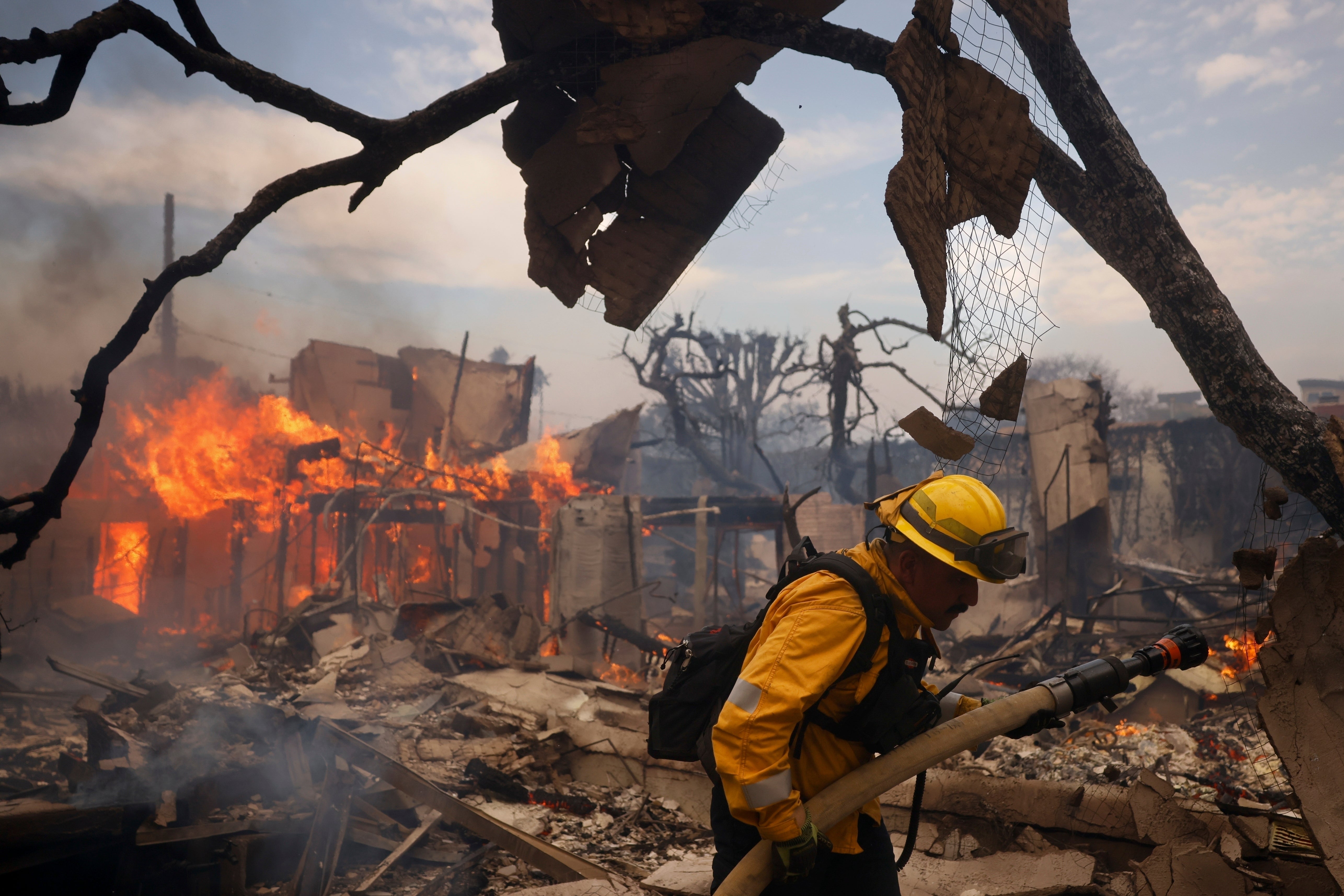
In the context of the latest fires, I wondered what Attali thinks today. Having just published a book in France on the history and future of cities, Attali speaks to me from his loft home in Paris.
“Although Pompeii was of course smaller, and was more a resort for Romans than a major city, it’s exactly the same in the sense of being a place where people have the best of culture, of architecture; of quality of life, food, academic life and also sexual life, and eroticism and sensuality. And Pompeii could be seen as a metaphor for a potential failure of a very large empire,” he says.
“Rome didn’t realise its fragility. The US is very strong, particularly with its new president, but it’s also very fragile, ecologically and politically. So it’s a very interesting comparison, even though, as we say in French, comparison is not reason.”
Los Angeles, Attali believes, is now at the beginning of a very large crisis, because people cannot live there any more. “So either they move elsewhere because they are forced to, or they rebuild on the spot without insurance,” he says. “In the meantime, rent is skyrocketing. The rich will survive and be richer than ever; the super rich will be super-richer. And of course, the poor will lose.”
But why do so many choose to ignore the danger, which now seems so clear?
On that point, I turned next to the Canadian writer John Vaillant, author of Fire Weather: A True Story from a Hotter World (2023), who lives in Vancouver, BC but was staying south of Los Angeles looking after his elderly father when the fires broke out.
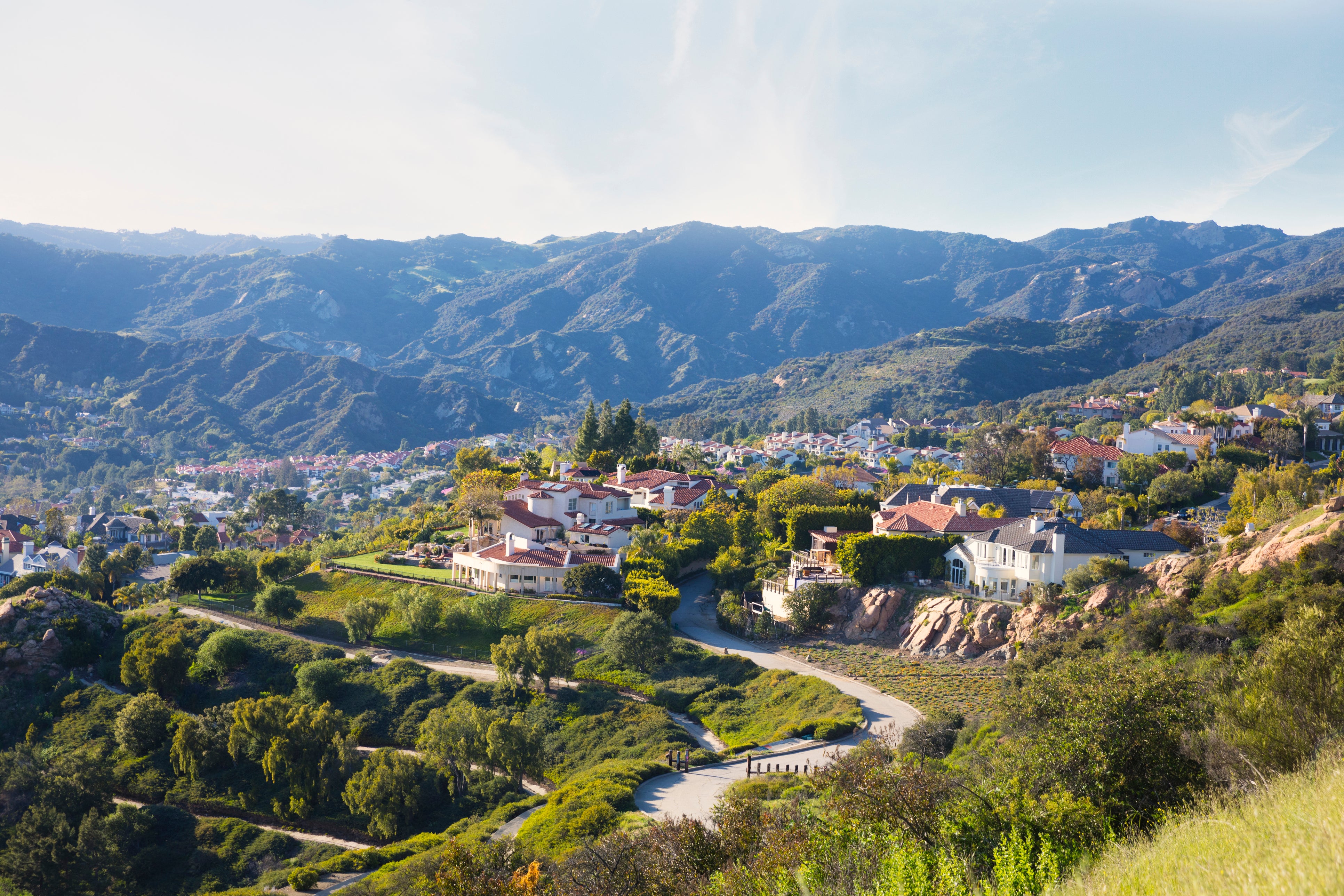
His book, an account of the 2016 inferno that engulfed the oil town of Fort McMurray in sub-Arctic northern Alberta, recounts how the fire was so hot that it even burned concrete. He works through the psychology we deploy when it comes to where we live.
“All of us are living in a certain amount of fantasy, and despite the fact that California is a famously flammable state, the residents of Los Angeles County, who live on steep, flammable hillsides, imagined that they might somehow magically be impervious to this,” he says.
“The water system and the hydrant system are excellent, but when you’re driving that much water uphill with pumps, that’s when you start to lose pressure. This happened in Fort McMurray, too – another wealthy city with good infrastructure.”
Vaillant believes that the insurance issue, alongside the infrastructure issue, could be one of the greatest obstacles to the resurgence of LA.
“The withdrawal 18 months ago of coverage from swathes of California by State Farm, a major, august insurance company, was really sobering news,” he says.
“California has the eighth-biggest economy in the world, and this insurer is saying we can’t invest in it. This is a withdrawal, a retreat, and the effects will be felt throughout the entire country because real estate is such a pillar of the economy.”
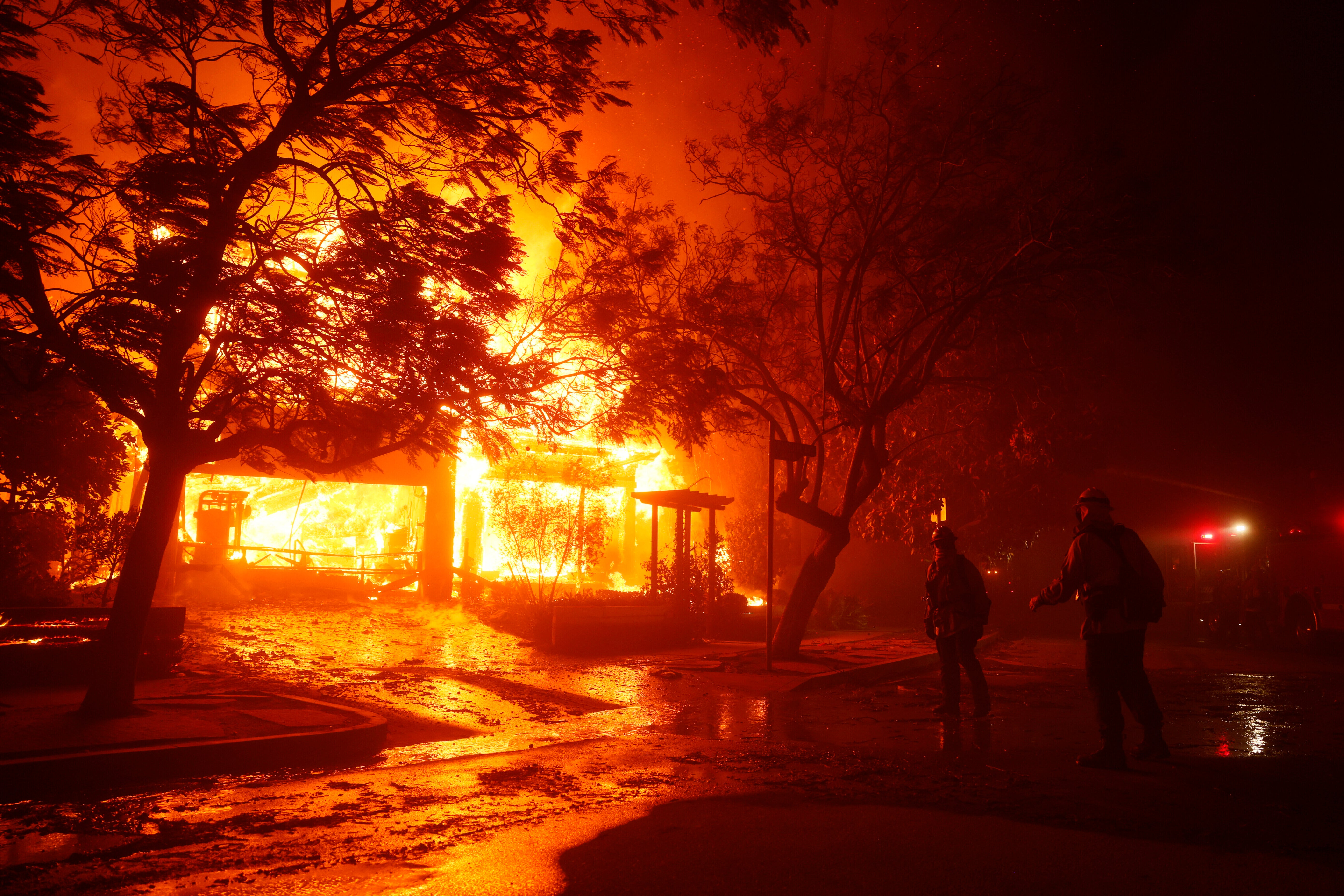
The consequences could be enormous; being able to put down roots is a stabilising force – not just for individuals, but for communities, and therefore countries, as a whole.
“California is a canary in the coal mine. Because it’s a charismatic place, so wealthy and celebrated, everything is kind of written larger there – but all over the world, we’re entering a new state of precariousness that is financial, physical, biological and botanical.”
Vaillant does believe, however, that the lush suburbs of northern LA could be revived, so long as people are allowed to rebuild correctly. “In a phoenix-like fashion, you could have a beautiful new network of neighbourhoods that might look different, but would still enjoy the beauty of southern California. One thing rich people, at least, might do is self-insure via neighbourhood consortia.”
But for now, even for those who had insurance, Vaillant points out a quirk in US home cover that could stymie progress towards more suitably built homes. Most policies, he explains, require claimants to rebuild in the same way and on the same spot – exactly what would make the area unviable.
With vast swathes of the county now lying in ruins – some 75 per cent of properties in Pacific Palisades, Altadena and Malibu have been destroyed – the land itself will retain immense real-estate value. If the ultra-rich do start building sumptuous and fire-resistant homes, protecting them with private fire brigades, we may see these areas become even more exclusive than they were before.
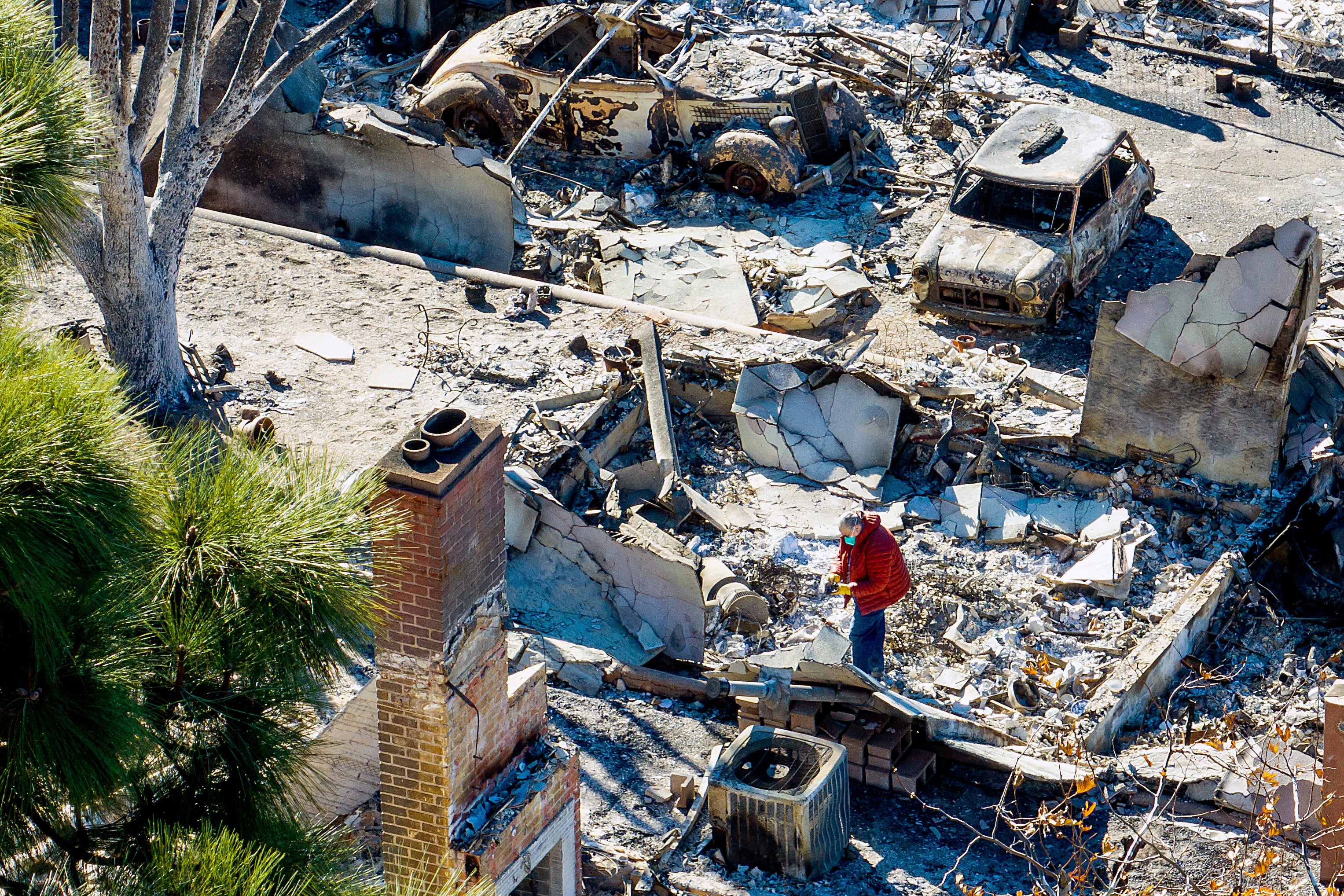
This process, known as climate gentrification, is already being discussed by sustainability experts. It’s happened in the cool city of Flagstaff, Arizona, 7,000 feet above the heat of the lower-lying parts of the state, where housing and rental prices have risen to the point where there is no affordable housing at all. The same effect can be seen on the repeatedly hurricane-threatened east coast of Florida, which has seen an exodus of its wealthiest residents. They have begun to retreat inland and to towns on the gentler west coast – where there’s now a property boom.
Juliette Hohnen is British-born and a very successful estate agent and broker, dealing with multimillion-dollar homes for celebrities and other mostly wealthy clients. She lives with her actor husband just outside the fire zone in Bel Air, but they were already driving south with their most precious possessions – “passports, birth certificates, art, family albums and my handbags” – as the fire looked like it might reach their area.
A few days later, when the couple had returned home, she was back at work and facing the fact that out of $125m worth of properties she had been dealing with a few weeks previously, $40m worth had either already burnt down or were at risk.
Among the professional classes, estate agents are not the most likely, perhaps, to find themselves acting as first responders in a crisis. But Hohnen is proud of having banded together with her rivals in the business to help rehouse what are possibly the wealthiest refugees since Vesuvius erupted 2,000 years ago and the smarter inhabitants of Pompeii and Herculaneum got out of town in time. “I’m a public servant at this point,” she told The Hollywood Reporter last week. “I have to help whoever I can.”
Speaking to me afterwards, Hohnen is anxious to point out, first, that not everyone in the affected areas is wealthy. “Some of these people in the Palisades have been living there for 70 years, and I don’t think they will be rebuilding,” she says. If you can’t afford to rebuild, she explains, the land values are expected to go down – but owners of “burnouts” will still have land worth 1 or 2 million.
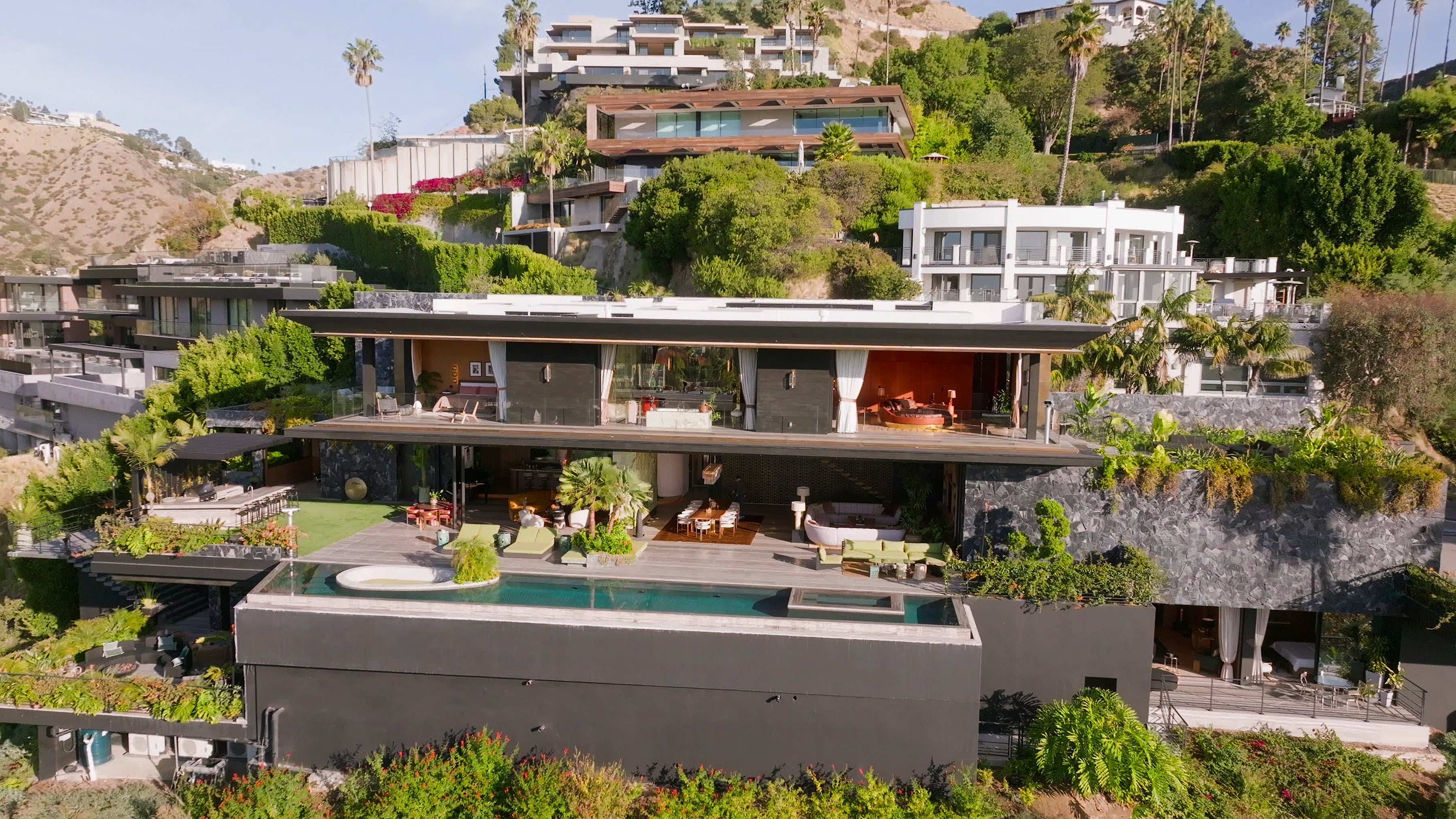
“So the people who are going to be buying properties are mostly going to be investors, or developers, who don’t mind waiting however long it’s going to take to rebuild. They’re also the people with cash, so they will be low-balling – although the governor has made it illegal to submit a lowball unsolicited offer, which is good.”
Among the myriad problems facing LA, of course, is the president’s plan to expel many of the Mexican construction workers who would be able to help rebuild. Research shows that 40 per cent of construction workers in California are immigrants, but in residential homebuilding, that proportion is much higher. In south California, almost 30 per cent of these migrants are illegal and thereby vulnerable to Trump’s mass deportation policy. “I’m not being political here,” Hohnen says, “but I think if he deports the workforce, there’ll be a major uproar.”
She continues: “You know, the reality is, we know California and Hollywood is a false paradise. We know that it’s a desert. We’ve had to bring water into it, but the original native people of this country were able to live here because they did control burns, and then we built up in all of those areas.
“But what you have to understand about Americans – and Californians, in particular – [is that] the people are mostly immigrants; we’re here to make our mark. We work hard, we make money. Our own house’s value has doubled in 20 years; now it’s gone down to half of what it was. We’re life gamblers. I came here with nothing. Now I have stuff, and it’s not that I want to lose it, but if I did, I’d still be fine.”
It’s true that while the sprawl and the freeways are not things of beauty, LA is still a paradise found. It’s overcome environmental problems in the past. In the Sixties and Seventies, it was synonymous with killer smogs. The air still isn’t great everywhere, but the smog has reduced drastically.
Will the fires prove to be a more gradual but nonetheless Pompeii-like blow – and will this extraordinary conurbation start to deflate, as climate refugees, rich and poor, trek east in a sort of reverse Grapes of Wrath, to higher and safer places?
Or will it be a disaster movie in reverse, where the talent, resourcefulness and financial strength of a beleaguered population allow it to recover in its own way and rise again?
It may be a story for our times.





Join our commenting forum
Join thought-provoking conversations, follow other Independent readers and see their replies
0Comments